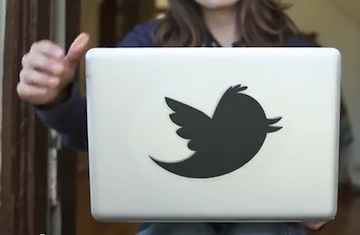
Twitter’s native video- and photo-sharing features may have hinted at its desire to go after Facebook, but the redesign it launched on Thursday stated them loud and clear.
Twitter now looks a lot more like the world’s largest social network, with features that focus on social interaction and brand pages.
Twitter once differentiated itself as an “information network” while Facebook defined itself as the “social graph.” But just as Facebook added real-time features that make it look more like Twitter, Twitter has inched into its competitor’s turf.
In June, Twitter’s video and photo-sharing tools positioned the network to increase engagement by breaking the mold of its 140-character tweets. Meanwhile, a new “Activity Feed” was added in August to keep track of followers’ interactions with other Twitter users, and later that month it added photo galleries to every user’s profiles — it’s first step toward establishing profile pages that are more than just an aggregation of tweets.
The new public-facing Twitter profile page is not another step toward that goal, it’s a giant leap. In the company’s own communications-department-approved words, the new profile “puts you and your interests front and center.” It wants to be “your opportunity to introduce yourself to the world” and “stay close to everything you care about.” All of these objectives encroach upon Facebook’s territory.
These four new features in particular challenge Facebook’s reign as the default social site for managing online identity, keeping up with friend-recommended (and created) content and serving as brands’ social media hub.
1. Brand Pages

Most brands have a presence on both Facebook and Twitter, but until Thursday, a brand’s Twitter page was a place to push content to their followers’ streams and respond to customer service requests. It was not a destination in itself, and there was no differentiation between brand accounts and user accounts.
Now Twitter will give brands a home. The new pages allow marketers to customize their headers in a way that makes their logos and taglines more prominent. They can also choose a tweet to stay at the top of their page, and that tweet will be automatically expand — even if the visitor doesn’t click on it — to show a photo or video.
Launch partners for the pages include American Express, Best Buy, Bing, Chevrolet, Coca-Cola, Dell, Disney, General Electric, Hewlitt-Packard, Intel, JetBlue, Kia, McDonald’s, Nike, PepsiCo, Staples, Verizon Wireless, NYSE Euronext, Heineken, Subway and Paramount Pictures.
2. Profile Pages

Twitter profiles now look more like Facebook and Google+ profiles. User information such as favorites, lists, and images have been moved to the upper left-hand side of the page — the web reader’s focus sweet spot.
3. In-Line Conversations, Images and Videos

In the Facebook News Feed, it’s easy to ease drop on conversations between friends because comments on status updates pile up directly beneath them. It’s easy to browse videos and photos because they appear in-line with other information.
Twitter has taken another step closer to News Feed’s design. It already had allowed users to view media and conversations associated with tweets in the sidebar. But now one click inserts that same content directly to the feed. Once you open up a tweet to view this additional information, it stays open in your feed.
4. Discovery Through Connections

Facebook tells you when your friends become friends with other people, join groups and share links. Now Twitter tells you what connections are retweeting, following and favoriting. The feature originally launched as an “activity stream” in August. In the new design, it lives under the “Discover” tab.
(Source)
 Follow
Follow